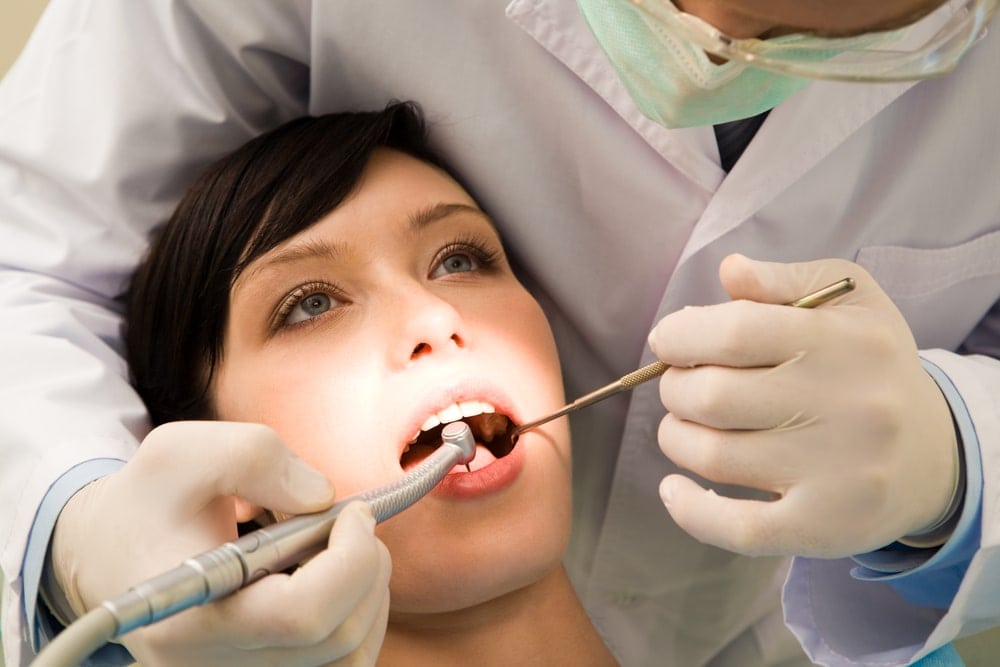Gum disease is a common oral issue for adults, ranging from slight gum inflammation to serious dental issues, including losing teeth. Pregnant women can be prone to gum disease due to hormonal changes and an increase in blood flow, so it is especially important that women who are pregnant practice good oral hygiene habits. This often leads to the question of how to treat gum disease naturally during pregnancy?
Treating Gum Disease During Pregnancy
When gum disease is in its early stages, it is known as gingivitis, or inflammation of the gums. If gingivitis goes untreated, it can develop into periodontitis, a more serious issue that can destroy tissues, ligaments, and bones in the mouth that ultimately can lead to tooth loss.
Symptoms and Causes of Gum Disease During Pregnancy
- Red or swollen gums
- Pockets between teeth and gums
- Sensitive or loose teeth
- Difficulty or pain when chewing
- Poor tooth alignment
- Persistent bad breath
Poor oral care habits aren’t the only thing that can irritate your gums. Other contributing factors include:
How to Prevent Gum Disease Naturally During Pregnancy
- Regular dentist visits for a deep cleaning to remove plaque build-up that can cause gum disease.
Talk to your doctor and dentist before seeking treatment, as doctors recommend that dental treatments occur during the second trimester if possible. - Brushing and Flossing rid the gums and mouth of bacteria, reducing or reversing the inflammation of gingivitis.
- Vitamin C from fruits or a supplement can help combat gingivitis.
- Vitamin A is essential in helping bones and teeth grow. Pay attention to the upper limits of Vitamin A.
- Rinse daily with a fluoride-containing mouthwash. Some rinses also have antiseptic ingredients to help kill bacteria that cause plaque.
Gum Disease Treatments
Tooth Scaling and Root Planing: Your dental professional will scrape off the tartar that has built up on teeth both above and below the gum line (tooth scaling), and then smooth rough spots on the tooth roots, making it more difficult for bacteria to collect and cause more plaque and tartar buildup.
Flap Surgery: If the gum inflammation and pockets next to the teeth persist after a deep tooth-cleaning procedure, your dentist this surgery to remove tartar from the pockets that have formed alongside the teeth. The pockets are then closed with stitches, so the gum tissue once again hugs the teeth. Reducing the pockets makes it easier and more comfortable to brush and floss your teeth.
Grafts: In severe cases of periodontitis in which bone and tissue have been destroyed, you may need bone or tissue grafts to replace the infected tissue. Your graft may involve a technique called guided tissue regeneration, in which a small piece of mesh is placed between the jaw bone and gums to allow both bone and tissue to re-grow. Guided tissue regeneration helps keep the gum tissue from expanding into the area where the bone should be, so both bone and tissue grafts have room to grow.
If the bacterial infections are severe, your doctor or dentist may put you on a round of antibiotics to help combat the infection.
Doxycycline Gel: is an antibiotic treatment that kills bacteria and shrinks the pockets that periodontal disease can cause along the gum line. Your periodontist applies the gel to the pockets after a tooth scaling/root planing procedure, and the antibiotic is released gradually over a period of about a week.
Chlorhexidine Chip: is a small, antimicrobial gelatin chip placed in a tissue pocket along the gum line after tooth scaling/root planing, and the antimicrobial is released gradually over time.
Minocycline Microspheres: are tiny particles containing minocycline as an antibiotic. These are placed in the tissue pockets after a tooth scaling/root planing procedure.
Doxycycline Pill: can help prevent overactive enzymes from breaking down gum tissue after periodontal disease treatment.Oral Antibiotics
Your doctor should know which antibiotics are safe during pregnancy, but you should let your doctor know if you have any allergies before starting antibiotics. Learn more about dental work during pregnancy.
Want to Know More?
Compiled using information from the following sources:
1. National Institute of Dental and Craniofacial Research, Periodontal (Gum) Disease: Causes, Symptoms, and Treatments
https://www.nidcr.nih.gov/OralHealth/Topics/GumDiseases/PeriodontalGumDisease.htm
2. WebMD, Dental Care Before, During, and After Pregnancy
https://www.webmd.com/oral-health/dental-care-pregnancy
3. MayoClinic, Antibiotics, and Pregnancy: What’s safe?
4. Natural-homeremedies.org, 6 Natural Cures For Periodontal Disease
5. MindBodyGreen, 9 Natural Ways To Treat Periodontal Disease






